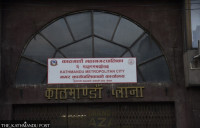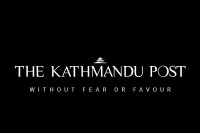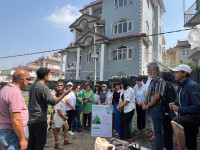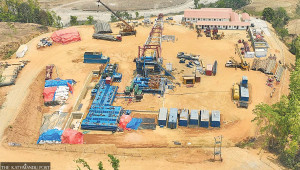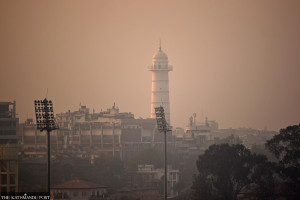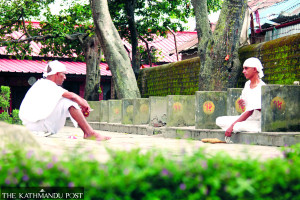Valley
It’s a long and steep career climb for female mountain guides
When 10 Nepali women climbed Mt Everest in 2008, the team had wanted female guides to help them ascent the mountain
Weena Pun
As the ten summiteers quickly learned, despite a century-rich history of Nepalis working as mountain guides, ever since mountaineers began exploring the Himalayas in 1900, women guides are a rare sight.
Secrets and skills of the trade are usually handed down from fathers to sons or between brothers. And the men normally start th eir journey from a porter, climbing up the ladder to become kitchen boys, cooks, sardars (leaders), trekking guides and then mountain guides. This career climb from a porter to a mountain guide can take up to 30 years or more.
According to Nepal Mountaineering Association, 1,847 members (with renewed memberships) of the organisation work as kitchen boys, cooks, support climbers and sardars. So negligible is the presence of women in these categories that the organisation has not bothered to list gender as a category on its website.
“There are a handful of female sardars. Kitchen boys, of course, are boys,” says Madhu Basnet, computer officer at the Association.
Pemba Gyalje Sherpa, the president of Nepal National Mountain Guide Association (NNMGA), thinks that the time commitment required to become a mountain guide drives women away. “Climbing a mountain does not make you a guide. You need to put in years and most women, if married and with kids, cannot do that. In this profession, a few years’ leave can end your career,” says Sherpa.
Familiarity with the mountains is a must to be a mountain guide. NNMGA looks for this extensive knowledge of mountains in its trainees even before it trains them to become international mountain guides. Once the trainees are selected, they enrol in a 10-month long “aspirant” course, followed by two years of field-work as assistant guides. A final exam at the end then determines their fate.
NNMGA currently has 32 members certified as international mountain guides. Fifteen are currently in the mountains as assistant guides. None of these 47 members are women.
“The next batch has two women, but we can’t have women mountain guides just because they are women. Mountains do not see gender and a client’s safety cannot be compromised,” says Sherpa.
Shailee Basnet and the team understand that mountains do not favour a particular gender, evidenced by the fact that both men and women have climbed Everest and both have lost their lives in its slopes. “The reason women cannot devote years to mountains is because they lack a support system,” says Basnet.
Since it takes years of experience to become a certified mountain guide, both men and women need as much support as they can get from their families, friends and colleagues.
“A woman rarely gets that. Her ambition is immediately struck down by society and its barriers,” says Gurung, also the managing director of Everest Women Treks, an organisation born out of the team’s Everest stint.
The group, excluding Maskey, Bista and Nawang Phuti Sherpa, are on a mission to climb the highest peak on every continent. They have already surmounted five summits and are headed to Mount Denali in Alaska this June. Once they reach the peak of Mount Vinson in Antarctica, they will be the first (group of) Nepali women to complete the seven summits. “Through our achievement on seven summits, we want to remind women that nothing is beyond their reach,” says Basnet.




 27.67°C Kathmandu
27.67°C Kathmandu
